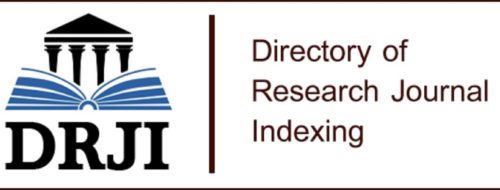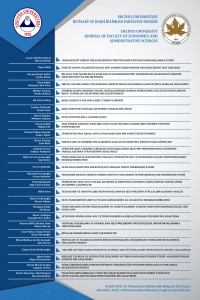Öz
Bu çalışmada OECD üyesi ülkelerin 2001-2018 yılları arasında birbirleri ile yaptıkları ticaret ağ analizi yöntemi ile incelenmiştir. Bu bağlamda, OECD'nin ticari ağ yapısının yıllara göre gösterdiği değişimin ortaya konulması, ülkelerin birbirleriyle kurdukları ticari ilişkilerin yoğunluğu ya da zayıflığının belirlenmesi, hangi ülkelerin istikrarlı olup ağdaki yerini koruduğunun ve ağ içerisinde merkez ve otorite ülkenin hangi üye ülke olduğunun ortaya konulması amaçlanmıştır. Çalışmanın verileri Trademap veri tabanından elde edilmiş olup bu verilerin analizleri UCINET programı ile gerçekleştirilmiştir. OECD ülkelerinin birbirleriyle yaptıkları ticarette 2001-2018 yılları arasındaki değişimi ortaya koymak amacıyla 2001, 2005, 2010, 2015, 2016, 2017 ve 2018 yıllarındaki uluslararası ticaret değişkeni temel alınarak ağ analizleri gerçekleştirilmiştir. Ağ analizinde; ülkelerin merkeziyet, otorite, ego-ağ büyüklükleri, bağlantı sayıları, ağ yoğunluğu ve özvektör merkezilikleri ortaya çıkarılmış ve yorumlanmıştır. Analizler sonucunda; OECD ülkelerinin birbirleriyle yapmış oldukları ticarette merkez ve otorite konumunda bulunan ülkenin tüm yıllar için ABD olduğu; ABD’nin bu yıllar boyunca en büyük ticaret ortakları olan Kanada ve Meksika ile ticari bağlantılarını aynı sıklık ve yoğunlukta sürdürdüğü; ABD, Kanada ve Meksika dışında grup içinde bağlantı sayılarının fazlalığı ve yoğunluğu ile en fazla dikkat çeken ülkenin Almanya olduğu; Almanya’nın ticari ilişkilerini sürdürdüğü ülkelerin çoğunun AB üyesi ülkeler olduğu; 2001-2018 yılları arasında OECD üyelerinin birbirleriyle olan ticaretinde güçlü iletişimi ve bağlantıları ele alınan yıllar itibariyle devam ettirdiği ve ticari ilişkilerinde istikrarlı olduğu ortaya konulmuştur
Anahtar Kelimeler
Kaynakça
- Cepeda-López, F., Gamboa-Estrada, F., León, C. ve Rincón-Castro, H. (2019). The evolution of world trade from 1995 to 2014: A network approach. The Journal of International Trade and Economic Development, 28(4), 452-485.
- Choi, J. H., Lee, S. W. ve Chon, B. S. (2012). Transitions in the film trade among OECD countries: A network approach. Media International Australia, 142(1), 16-29.
- Dam, M. (2016). Dış ticaret ve ar-ge yatırımları arasındaki ilişki: OECD ülkeleri için panel veri analizi. Akademik Bakış Dergisi, 56, 345-358.
- Engin Öztürk, M. B. (2016). Uluslararası ekonomik entegrasyonlar ve kuruluşlar (1. Basım). Bursa: Ekin Yayınevi.
- Gorgoni, S., Amighini, A. ve Smith, M. (2018). Automotive international trade networks: A comparative analysis over the last two decades. Network Science, 6(4), 571-606.
- Güzeller, C. O., Eser, M. T. ve Aksu, G. (2014). UCINET ile sosyal ağ analizi. Ankara: Maya Akademi.
- Jiang, X. R., Yang, Y. C. ve Wang, S. L. (2019). Trade network dataset development in 227 countries and regions (1985–2015). Journal of Global Change Data and Discovery, 3(3), 227-233.
- Kılıç, E. (2018). Mekansal yer çekimi modelleri ile OECD ülkelerinde dış ticaret ilişkisinin analizi (Yayımlanmamış yüksek lisans tezi). Pamukkale Üniversitesi Sosyal Bilimler Enstitüsü.
- Konak, A. (2018). Yüksek teknoloji içeren ürün ihracatının ihracat hacmi ve ekonomik büyüme üzerine etkisi; seçilmiş OECD ülkeleri ve Türkiye örneği. JOMELIPS-Journal of Management Economics Literature Islamic and Political Sciences, 3(2), 56-80.
- Li, Y., Peng, Y., Luo, J., Cheng, Y. ve Veglianti, E. (2019). Spatial-temporal variation characteristics and evolution of the global industrial robot trade: A complex network analysis. PloS one, 14(9), 1-14.
- Long, T., Pan, H., Dong, C., Qin, T. ve Ma, P. (2019). Exploring the competitive evolution of global wood forest product trade based on complex network analysis. Physica A: Statistical Mechanics and its Applications, 525, 1224-1232.
- OECD. (2020, Şubat 11). Members and partners. Erişim adresi https://www.OECD.org/about/members-and-partners/
- Özer, M. ve Çiftçi, N. (2009). Ar-ge harcamaları ve ihracat ilişkisi: OECD ülkeleri panel veri analizi. Dumlupınar Üniversitesi Sosyal Bilimler Dergisi, 23(3), 39-49.
- Reichardt, J. (2009). Introduction to complex networks. J. Reichardt (Edt.), Lecture notes in physics 766 – Structure in complex networks içinde (s. 1-11). Berlin Heidelberg: Springer-Verlag.
- Said, F. F. ve Fang, M. (2019). A probe into the status of global countries’ trade positions in the global value chain (GVC)-based on value added trade perspective and network modeling. European Journal of Sustainable Development, 8(1), 305-323.
- Sanyal, P. (2004). The role of innovation and opportunity in bilateral OECD trade performance. Review of World Economics, 140(4), 634-663.
- Seyidoğlu, H. (2015). Uluslararası iktisat, İstanbul: Güzem Can Yayınları.
- Soyyiğit, S. ve Yavuzaslan, K. (2018). Zeytin ihracatı ve uluslararası piyasada Türkiye’nin rolünün ağ analizi yaklaşımı ile incelenmesi. Akdeniz Üniversitesi İktisadi ve İdari Bilimler Fakültesi Dergisi, 18(38), 47-84.
- Soyyiğit, S. ve Yavuzaslan, K. (2019). Türkiye ve Rusya arasındaki ticari iliskilerin kompleks ağ yaklaşımı ile sektör bazlı analizi. Igdir University Journal of Social Sciences, (18), 401-433.
- Toroczkai, Z. (2005). Complex networks: The challenge of interaction topology, Los Alamos Science, 29, 94-109.
- Trademap. (2020, Şubat 10). List of exporters for the selected product. Erişim adresi https://www.trademap.org/Country_SelProduct_TS.aspx?nvpm=1%7c%7c6578%7c%7c%7cTOTAL%7c%7c%7c2%7c1%7c1%7c2%7c2%7c1%7c3%7c1%7c1
- Trademap. (2020, Şubat 10). List of importers for the selected product. Erişim adresi https://www.trademap.org/Country_SelProduct_TS.aspx?nvpm=1%7c%7c6578%7c%7c%7cTOTAL%7c%7c%7c2%7c1%7c1%7c1%7c2%7c1%7c3%7c1%7c1
- UNCTAD. (2020, Şubat 10). Merchandise: Intra-trade and extra-trade of country groups by product, annual. Erişim adresi https://unctadstat.unctad.org/wds/TableViewer/tableView.aspx?ReportId=24397
- Wakelin, K. (1998). The role of innovation in bilateral OECD trade performance. Applied Economics, 30(10), 1335-1346.
- Wang, K. ve Sun, D. (2015). An empirical evaluation of the Shanghai Cooperation Organization from social network perspective. Metallurgical and Mining Industry, (6), 412-421.
- Wang, W. ve Li, Z. (2019). The evolution of China’s interregional coal trade network, 1997–2016. Physica A: Statistical Mechanics and its Applications, 536, 1-13.
- Wasserman, S. ve Faust, K. (1994). Social network analysis: Methods and applications (8. Baskı). Cambridge: Cambridge University Press.
Öz
In this study, the trade between OECD member countries and each other between the years of 2001-2018 was analyzed using the network analysis method. In this context, it is aimed to reveal the change of the OECD's commercial network structure over the years, to determine the intensity or weakness of the commercial relations established by the member countries, to determine which countries are stable and maintain their place in the network, and to reveal which member country is the central and authority country within the network. The data of the study were obtained from the Trademap database and the analyses of these data were made with the UCİNET program. Network analyzes were conducted based on international trade variables in the years of 2001, 2005, 2010, 2015, 2016, 2017 and 2018 in order to reveal the change between the years of 2001-2018 in the trade between OECD member countries. In network analysis; the centrality, authority, ego-network sizes, number of ties, network density and eigenvector centralities of the countries have been revealed and interpreted. As a result of the analysis, it was revealed that the country, which was the hub and authority in the trade of OECD countries with each other, was the USA for all years; the USA maintained its commercial relations with Canada and Mexico, which were the biggest trading partners of USA during these years, with similar frequency and density; except for the USA, Canada and Mexico, Germany was the country that attracted the most attention with its high number of ties and density in the group; most of the countries with which Germany maintained its commercial relations were EU member countries; between the years 2001 and 2018, OECD members maintained strong communication and connections in their trade with each other and their business relations were stable.
Anahtar Kelimeler
Kaynakça
- Cepeda-López, F., Gamboa-Estrada, F., León, C. ve Rincón-Castro, H. (2019). The evolution of world trade from 1995 to 2014: A network approach. The Journal of International Trade and Economic Development, 28(4), 452-485.
- Choi, J. H., Lee, S. W. ve Chon, B. S. (2012). Transitions in the film trade among OECD countries: A network approach. Media International Australia, 142(1), 16-29.
- Dam, M. (2016). Dış ticaret ve ar-ge yatırımları arasındaki ilişki: OECD ülkeleri için panel veri analizi. Akademik Bakış Dergisi, 56, 345-358.
- Engin Öztürk, M. B. (2016). Uluslararası ekonomik entegrasyonlar ve kuruluşlar (1. Basım). Bursa: Ekin Yayınevi.
- Gorgoni, S., Amighini, A. ve Smith, M. (2018). Automotive international trade networks: A comparative analysis over the last two decades. Network Science, 6(4), 571-606.
- Güzeller, C. O., Eser, M. T. ve Aksu, G. (2014). UCINET ile sosyal ağ analizi. Ankara: Maya Akademi.
- Jiang, X. R., Yang, Y. C. ve Wang, S. L. (2019). Trade network dataset development in 227 countries and regions (1985–2015). Journal of Global Change Data and Discovery, 3(3), 227-233.
- Kılıç, E. (2018). Mekansal yer çekimi modelleri ile OECD ülkelerinde dış ticaret ilişkisinin analizi (Yayımlanmamış yüksek lisans tezi). Pamukkale Üniversitesi Sosyal Bilimler Enstitüsü.
- Konak, A. (2018). Yüksek teknoloji içeren ürün ihracatının ihracat hacmi ve ekonomik büyüme üzerine etkisi; seçilmiş OECD ülkeleri ve Türkiye örneği. JOMELIPS-Journal of Management Economics Literature Islamic and Political Sciences, 3(2), 56-80.
- Li, Y., Peng, Y., Luo, J., Cheng, Y. ve Veglianti, E. (2019). Spatial-temporal variation characteristics and evolution of the global industrial robot trade: A complex network analysis. PloS one, 14(9), 1-14.
- Long, T., Pan, H., Dong, C., Qin, T. ve Ma, P. (2019). Exploring the competitive evolution of global wood forest product trade based on complex network analysis. Physica A: Statistical Mechanics and its Applications, 525, 1224-1232.
- OECD. (2020, Şubat 11). Members and partners. Erişim adresi https://www.OECD.org/about/members-and-partners/
- Özer, M. ve Çiftçi, N. (2009). Ar-ge harcamaları ve ihracat ilişkisi: OECD ülkeleri panel veri analizi. Dumlupınar Üniversitesi Sosyal Bilimler Dergisi, 23(3), 39-49.
- Reichardt, J. (2009). Introduction to complex networks. J. Reichardt (Edt.), Lecture notes in physics 766 – Structure in complex networks içinde (s. 1-11). Berlin Heidelberg: Springer-Verlag.
- Said, F. F. ve Fang, M. (2019). A probe into the status of global countries’ trade positions in the global value chain (GVC)-based on value added trade perspective and network modeling. European Journal of Sustainable Development, 8(1), 305-323.
- Sanyal, P. (2004). The role of innovation and opportunity in bilateral OECD trade performance. Review of World Economics, 140(4), 634-663.
- Seyidoğlu, H. (2015). Uluslararası iktisat, İstanbul: Güzem Can Yayınları.
- Soyyiğit, S. ve Yavuzaslan, K. (2018). Zeytin ihracatı ve uluslararası piyasada Türkiye’nin rolünün ağ analizi yaklaşımı ile incelenmesi. Akdeniz Üniversitesi İktisadi ve İdari Bilimler Fakültesi Dergisi, 18(38), 47-84.
- Soyyiğit, S. ve Yavuzaslan, K. (2019). Türkiye ve Rusya arasındaki ticari iliskilerin kompleks ağ yaklaşımı ile sektör bazlı analizi. Igdir University Journal of Social Sciences, (18), 401-433.
- Toroczkai, Z. (2005). Complex networks: The challenge of interaction topology, Los Alamos Science, 29, 94-109.
- Trademap. (2020, Şubat 10). List of exporters for the selected product. Erişim adresi https://www.trademap.org/Country_SelProduct_TS.aspx?nvpm=1%7c%7c6578%7c%7c%7cTOTAL%7c%7c%7c2%7c1%7c1%7c2%7c2%7c1%7c3%7c1%7c1
- Trademap. (2020, Şubat 10). List of importers for the selected product. Erişim adresi https://www.trademap.org/Country_SelProduct_TS.aspx?nvpm=1%7c%7c6578%7c%7c%7cTOTAL%7c%7c%7c2%7c1%7c1%7c1%7c2%7c1%7c3%7c1%7c1
- UNCTAD. (2020, Şubat 10). Merchandise: Intra-trade and extra-trade of country groups by product, annual. Erişim adresi https://unctadstat.unctad.org/wds/TableViewer/tableView.aspx?ReportId=24397
- Wakelin, K. (1998). The role of innovation in bilateral OECD trade performance. Applied Economics, 30(10), 1335-1346.
- Wang, K. ve Sun, D. (2015). An empirical evaluation of the Shanghai Cooperation Organization from social network perspective. Metallurgical and Mining Industry, (6), 412-421.
- Wang, W. ve Li, Z. (2019). The evolution of China’s interregional coal trade network, 1997–2016. Physica A: Statistical Mechanics and its Applications, 536, 1-13.
- Wasserman, S. ve Faust, K. (1994). Social network analysis: Methods and applications (8. Baskı). Cambridge: Cambridge University Press.
Ayrıntılar
| Birincil Dil | Türkçe |
|---|---|
| Bölüm | Makaleler |
| Yazarlar | |
| Yayımlanma Tarihi | 25 Aralık 2020 |
| Yayımlandığı Sayı | Yıl 2020 Sayı: 1 - 19. Uluslararası İşletmecilik Kongresi Özel Sayısı |
Cited By
KÜRESEL HURDA DEMİR TİCARETİ İLİŞKİLERİNİN SOSYAL AĞ ANALİZİ YÖNTEMİYLE DEĞERLENDİRİLMESİ
Mehmet Akif Ersoy Üniversitesi İktisadi ve İdari Bilimler Fakültesi Dergisi
https://doi.org/10.30798/makuiibf.1097376













ERÜ İktisadi ve İdari Bilimler Fakültesi Dergisi 2021 | iibfdergi@erciyes.edu.tr
Bu eser Creative Commons Atıf-Gayri Ticari-Türetilemez 4.0 Uluslararası Lisansı ile lisanslanmıştır.



